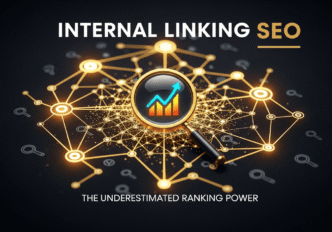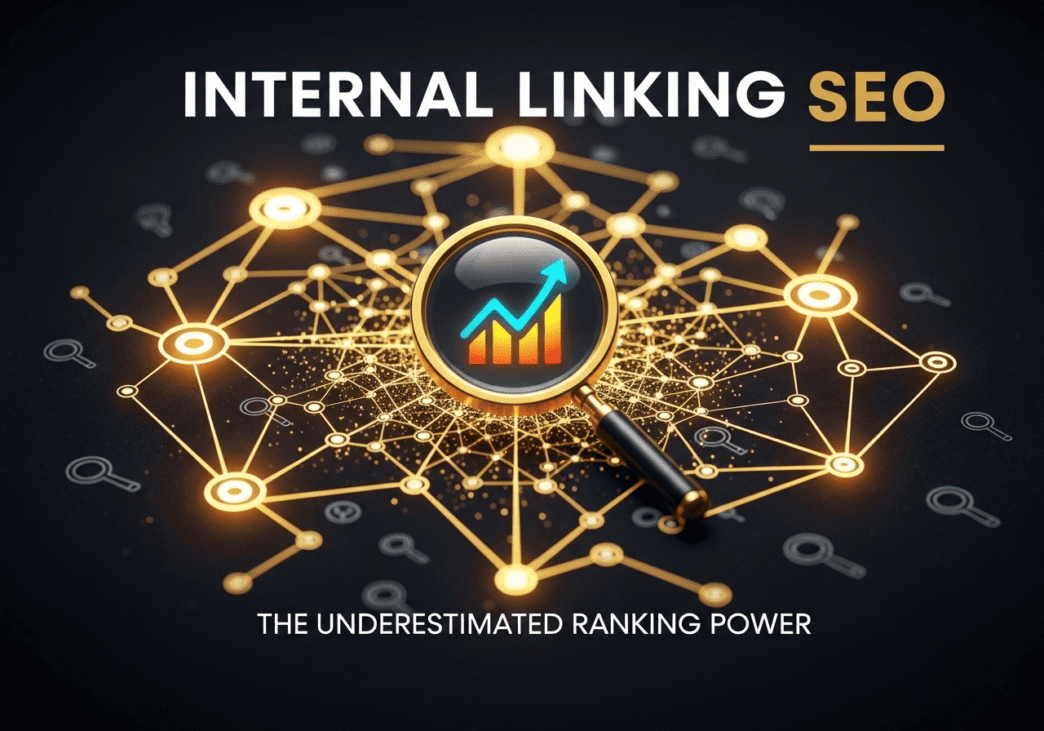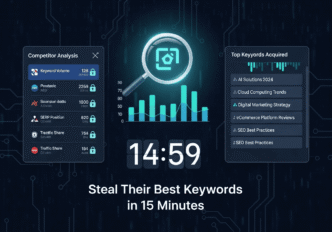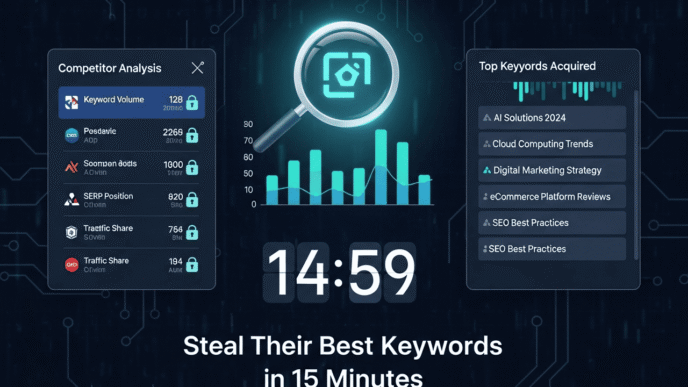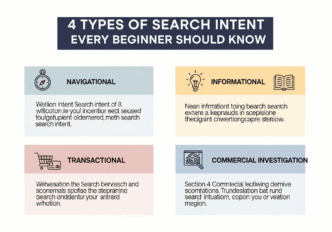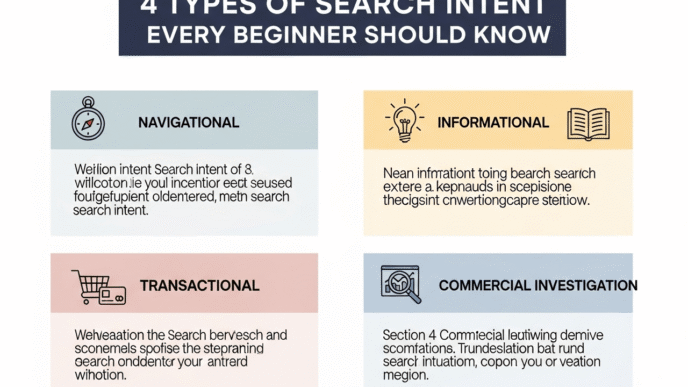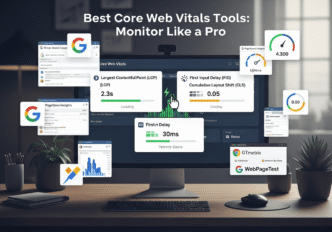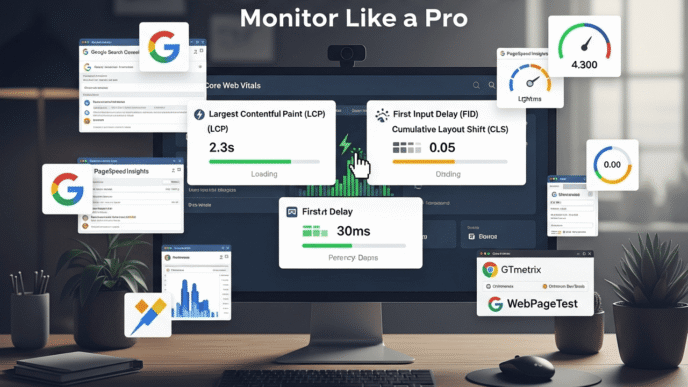Picture this: You’ve written amazing content, optimized for keywords, built backlinks, and yet your rankings are stuck in SEO purgatory. Sound familiar? Here’s the plot twist – you might be overlooking the most powerful (and free!) SEO weapon hiding in plain sight on your website.
Internal linking SEO is like the quiet kid in class who turns out to be a genius. While everyone’s chasing shiny new SEO tactics, this humble strategy has been silently boosting rankings, improving user experience, and making Google’s crawlers do a happy dance through websites for decades.
This comprehensive guide covers everything you need to know about internal linking – from basic concepts to advanced strategies that top SEO professionals use to dominate search results. By the end, you’ll have a complete roadmap to transform your website into an internal linking powerhouse.
Table of Contents
Toggle
What Exactly Is Internal Linking SEO? (And Why Should You Care?)
Let’s start with the foundation. Internal linking SEO refers to the strategic practice of connecting pages within your own website using hyperlinks. Think of it as creating a roadmap that helps both users and search engines navigate your content ecosystem with purpose and precision.
But here’s where it gets interesting – these aren’t just random connections. Strategic internal linking is like being a master architect, designing how page authority flows through your site and guiding visitors exactly where you want them to go for maximum impact.
The Science Behind Internal Linking
Why internal linking matters for SEO boils down to three fundamental principles that search engines use to understand and rank websites:
Authority Distribution: Internal links act as conduits for passing ranking power between pages Content Discovery: They help search engines find and index your content faster and more efficiently
User Signals: They improve engagement metrics that search engines use as ranking factors
💡 Pro Tip: Google’s John Mueller has repeatedly emphasized that internal links help Google understand the relationship and relative importance of pages on your site. It’s like giving Google a GPS for your content hierarchy!
Internal vs External Links: Understanding the Difference
While external links (backlinks) bring authority from other websites, internal links distribute that authority throughout your own site. Think of external links as bringing water into your house, while internal links are the plumbing system that distributes it to every room.
| Internal Links | External Links |
|---|---|
| Connect pages within your site | Connect to other websites |
| You control 100% of them | Depend on other site owners |
| Pass authority between your pages | Bring new authority to your site |
| Improve site structure | Build domain authority |
| Enhance user experience | Provide additional value/sources |
How Does Internal Linking Improve SEO Rankings?
Now comes the million-dollar question: how internal linking improves SEO rankings? The answer lies in understanding the sophisticated algorithms that search engines use to evaluate websites.
The Page Authority Transfer Mechanism
When you link from a high-authority page to another page on your site, you’re essentially creating a pathway for ranking power transfer. This concept, known as link equity distribution, is fundamental to how search engines determine page importance.
Here’s a real-world example that’ll blow your mind: Backlinko’s Brian Dean conducted an experiment where he added internal links from his most popular articles to a struggling blog post. The result? The previously buried content saw a 40% increase in organic traffic and started ranking on page one for competitive keywords within 60 days.
Enhanced Site Structure & Crawlability
Website navigation through internal links creates a logical site structure that search engines can crawl efficiently. This improved crawlability leads to better indexation and understanding of your content relationships.
User Experience Signals That Boost Rankings
Search engines pay close attention to user behavior signals. Strategic internal linking improves these metrics:
- Lower bounce rates (users explore more pages)
- Increased session duration (users spend more time on site)
- Higher pages per session (users discover more content)
- Improved dwell time (users engage deeply with content)
What Are Internal Linking SEO Best Practices?
Ready to master the internal linking SEO best practices that separate amateur websites from ranking powerhouses? Let’s dive into the strategies that actually move the needle.
1. The Contextual Relevance Golden Rule
The most powerful internal links feel natural and provide genuine value to readers. Instead of stuffing links randomly like SEO confetti, place them where they genuinely enhance understanding and provide logical next steps.
Perfect placement example: If you’re explaining keyword research and mention “content optimization techniques,” that’s the ideal spot to link to your comprehensive content optimization guide.
2. Strategic Anchor Text Optimization
Your anchor text should be descriptive, keyword-rich, and set proper expectations for what users will find. Avoid generic phrases that provide no context or value.
Powerful anchor text examples:
- “comprehensive keyword research methodology”
- “proven link building strategies for 2025″
- “technical SEO audit checklist”
- “advanced content optimization techniques”
3. The Topic Cluster Hub Model
Create comprehensive content hubs around your main topics, then strategically link related articles back to these central resources. This approach establishes topical authority and creates powerful content clusters that search engines love.
💡 Pro Tip: HubSpot has mastered this strategy. Their marketing hub page links to dozens of related subtopics, while all those subtopic pages link back to the hub. This creates a powerful internal linking web that has helped them dominate marketing-related search terms for years.
4. Deep Linking Strategy for Maximum Impact
Don’t just link to your homepage or main category pages. Link deep into your site to specific, valuable content that directly relates to your current topic. This strategy helps distribute authority to pages that might otherwise remain hidden.
5. The Fresh Content Integration Method
Whenever you publish new content, immediately identify opportunities to link to it from existing high-authority pages. Similarly, add links from your new content to established pages to create immediate authority flow.
How Many Internal Links Should You Include Per Page?
This question haunts many SEO practitioners, but the answer isn’t as mysterious as you might think. Let’s break down the science behind optimal internal link density.
The Strategic Link Distribution Framework
The number of internal links should correlate with content length, page importance, and user needs. Here’s a data-driven approach:
Content-Based Guidelines:
| Content Type | Word Count | Recommended Internal Links |
|---|---|---|
| Blog posts | 800-1,500 words | 3-5 strategic links |
| Pillar content | 2,500-5,000 words | 8-15 comprehensive links |
| Landing pages | 500-1,000 words | 2-4 focused links |
| Category pages | 300-800 words | 5-10 navigational links |
| Product pages | 200-600 words | 2-5 relevant links |
Quality Over Quantity: The Relevance Principle
Remember, search engine optimization rewards value, not manipulation. One highly relevant internal link that genuinely helps users is infinitely more valuable than ten random ones that add no context or value.
The 100-Link Guideline Myth
While Google has mentioned they typically don’t follow more than 100 links per page, this doesn’t mean you should aim for 100 links. Focus on strategic placement rather than hitting arbitrary numbers.
Which Types of Internal Links Drive Results?
Understanding the different types of internal links and their specific purposes is crucial for developing an effective internal linking strategy for better SEO.
1. Navigational Internal Links
These links help users and search engines understand your site’s hierarchy and structure.
Examples:
- Main navigation menu links
- Breadcrumb navigation
- Footer navigation links
- Sidebar category links
2. Contextual Internal Links
The most powerful type – these links appear naturally within your content and provide additional value to readers.
Best practices:
- Link to relevant, helpful resources
- Use descriptive anchor text
- Place links where they enhance understanding
- Ensure the linked content delivers on the anchor text promise
3. Related Content Links
These help users discover additional relevant content and keep them engaged with your site longer.
Implementation ideas:
- “Related articles” sections
- “You might also like” recommendations
- Author bio links to other articles
- Category-based content suggestions
4. Call-to-Action Internal Links
Strategic links that guide users toward conversion goals while providing SEO benefits.
Examples:
- Links to product pages from blog posts
- Service page links from educational content
- Newsletter signup page links
- Contact page links from service descriptions
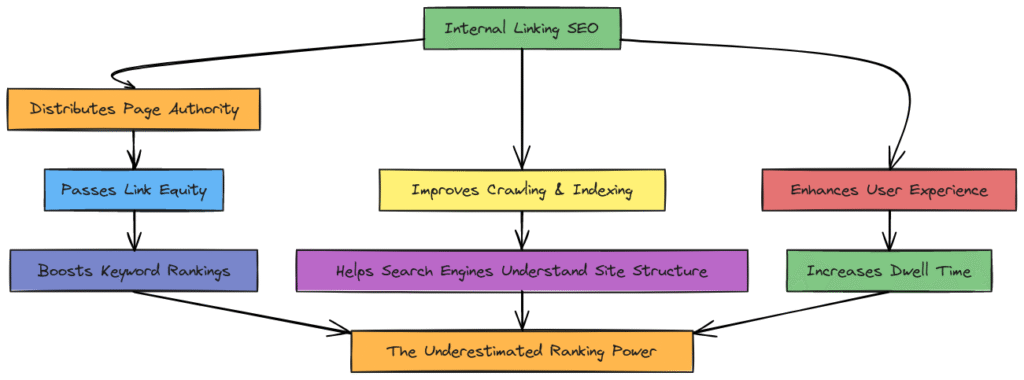
What Tools Can Supercharge Your Internal Linking Strategy?
Let’s explore the essential tools that will help you identify opportunities, track progress, and optimize your internal linking SEO guide for beginners efforts.
Free Tools That Deliver Professional Results
| Tool | Primary Function | Key Features | Best For |
|---|---|---|---|
| Google Search Console | Internal link analysis | Links report, crawl data | Identifying current link patterns |
| Screaming Frog SEO Spider | Comprehensive site audit | Link analysis, broken link detection | Technical internal link audit |
| Google Analytics | User behavior tracking | Page flow, user journey analysis | Understanding link performance |
| Ahrefs Webmaster Tools | Link opportunity analysis | Internal linking suggestions | Finding new linking opportunities |
| YOAST SEO | WordPress optimization | Internal linking suggestions | Real-time linking recommendations |
Premium Tools for Advanced Analysis
Ahrefs Site Audit: Provides detailed internal linking analysis with specific recommendations SEMrush Site Audit: Offers comprehensive internal link health reports Sitebulb: Delivers visual site structure analysis with internal link mapping
How to Use Google Search Console for Internal Linking Intelligence
Navigate to Links → Internal links to discover which pages receive the most internal links. This data reveals your current internal linking patterns and helps identify pages that might need more internal link support.
Pro analysis steps:
- Sort by “Target page” to see your most-linked pages
- Identify important pages with few internal links
- Look for linking opportunities between related content
- Monitor changes over time to track improvement
How to Create an Internal Linking Strategy That Works?
Developing a systematic approach to internal linking transforms random efforts into a powerful SEO strategy. Here’s your step-by-step blueprint for success.
Phase 1: Comprehensive Site Audit (Week 1)
Step 1: Inventory Your Content
- List all important pages on your site
- Categorize content by topic and intent
- Identify your highest-authority pages
- Find orphaned pages with few incoming links
Step 2: Analyze Current Internal Link Patterns
- Use Google Search Console to see existing link distribution
- Identify pages that receive too few internal links
- Look for over-linked pages that might need optimization
- Map current content relationships
Step 3: Competitive Analysis
- Study how top-ranking competitors structure their internal links
- Identify content cluster patterns in your niche
- Note effective anchor text strategies
- Look for gaps in their approach that you can exploit
Phase 2: Strategic Planning (Week 2)
Step 1: Create Topic Clusters
- Group related content into thematic clusters
- Identify pillar content for each cluster
- Plan supporting content connections
- Map logical link pathways
Step 2: Prioritize High-Impact Opportunities
- Focus on linking from high-authority pages first
- Target important pages that need more internal links
- Identify content gaps that need new supporting articles
- Plan anchor text variations for each target page
Step 3: Develop Link Distribution Strategy
- Balance link equity across important pages
- Plan deep linking to valuable but buried content
- Create logical user journey pathways
- Design conversion-focused link placement
Phase 3: Implementation Excellence (Weeks 3-4)
Step 1: Update Existing High-Traffic Content
- Add 2-3 relevant internal links to top-performing posts
- Ensure links provide genuine value to readers
- Use varied, descriptive anchor text
- Link to both new and established content
Step 2: Optimize New Content Publishing
- Include internal links in every new piece of content
- Link back to relevant pillar content
- Connect to related articles in the same topic cluster
- Add links from new content to established pages
Step 3: Fix Technical Issues
- Repair any broken internal links
- Update redirected link destinations
- Ensure proper link structure in navigation
- Optimize internal link loading speed
🚀 Pro Tip: Start with your money pages – the content that drives conversions or leads. Boost these with strategic internal links from your highest-traffic content first, then expand your strategy to supporting content.
What Are the Common Internal Linking Mistakes to Avoid?
Even experienced SEO professionals fall into these internal linking traps. Understanding these mistakes and their impact is crucial for maintaining a healthy internal linking SEO strategy. Here are the most damaging errors that could be silently killing your search performance.
Critical Statistics That Will Shock You
Before diving into specific mistakes, consider these eye-opening statistics:
- 15% of SEO experts list problems with internal or external linking as one of the biggest content marketing mistakes made on websites
- Startup companies with thousands of major internal linking issues significantly underperform compared to those with well-organized internal links
- Users’ average time-on-page sits at only 52 seconds, making strategic internal link placement crucial for engagement
Mistake #1: The Broken Link Epidemic
Problem: Broken internal links create dead ends that frustrate users and waste crawl budget. Impact: When users click on a broken link, they often receive a “404 Page Not Found” message, resulting in higher bounce rates and lower user engagement Solution: Conduct monthly audits using tools like Screaming Frog or Google Search Console to identify and fix broken internal links immediately.
Mistake #2: Generic and Meaningless Anchor Text
Problem: Using vague phrases like “click here,” “read more,” or “learn more” instead of descriptive anchor text. Why it hurts: Irrelevant or over-optimized anchor text confuses readers and search engines, violates Google’s spam policies, and makes content feel unnatural Solution: Use specific, keyword-rich anchor text that accurately describes the destination page’s content.
Mistake #3: Creating Orphaned Pages
Problem: Publishing valuable content without any internal links pointing to it from other pages. Impact: Since there are no pathways for crawlers to reach orphaned pages, they do not get crawled or indexed Solution: Implement a content audit system to identify orphaned pages and strategically link to them from relevant, high-authority content.
Mistake #4: Overlinking and Link Dilution
Problem: Adding too many internal links on a single page, diluting their individual value. Expert insight: Google’s John Mueller has explained that too many internal links on the same page can dilute their value Best practice: Generally, aim for 5-10 internal links per 2,000 words, or about one link every 200-300 words
Mistake #5: Redirect Chains and Loops
Problem: Creating complex redirect patterns that slow down page loading and confuse search engines. Technical impact: Multiple redirects occur in a sequence, creating a redirect chain. Each redirect increases page load time and dilutes link equity Solution: Use direct 301 redirects and regularly audit for redirect chains using technical SEO tools.
Mistake #6: Ignoring Contextual Relevance
Problem: Linking to pages that don’t relate to the current content’s topic or user intent. User experience impact: Unnatural links interrupt the reader’s path and make text harder to follow, reducing user trust and increasing bounce rates Solution: Only add internal links when they provide genuine value and logical progression for users.
Mistake #7: Poor Link Placement Strategy
Problem: Burying important internal links at the bottom of pages where users rarely scroll. Data-driven insight: According to Backlinko, internal links high up on a page improve dwell time and minimize bounce rates—crucial signals for SEO Strategy: Place your most important internal links within the first few paragraphs and throughout the content where they add contextual value.
The Enterprise-Level Challenge
Large organizations face unique internal linking challenges that smaller sites don’t encounter:
Scale complexity: Enterprises frequently succumb to internal linking mistakes due to the sheer scale and complexity of their websites, which often encompass thousands of pages and multiple hierarchies
Coordination issues: Managing internal links across multiple departments and content teams creates opportunities for broken links and inconsistent strategies to slip through the cracks.
💡 Pro Tip: Set up automated monitoring systems to catch internal linking issues before they impact your SEO performance. Many enterprise-level problems can be prevented with the right processes and tools in place.
⚠️ Expert Warning: Matt Cutts from Google has warned that excessive keyword-stuffed internal anchor text can trigger algorithmic penalties. Keep it natural, varied, and user-focused!
How Do You Measure Internal Linking Success?
You can’t optimize what you don’t measure. Here’s how to track whether your internal linking efforts are driving real results.
Essential Metrics to Monitor
Traffic Distribution Analysis:
- Percentage increase in organic traffic to previously low-performing pages
- More pages receiving organic search traffic
- Improved traffic distribution across your site
- Higher click-through rates from internal links
User Engagement Improvements:
- Increased average session duration
- Lower bounce rates across linked content
- Higher pages per session
- Improved time on page for target content
Search Performance Indicators:
- Keyword ranking improvements for internally linked pages
- Increased search impressions and clicks
- Higher average position for target keywords
- Improved featured snippet opportunities
The 90-Day Internal Linking Experiment Framework
Week 1-2: Baseline Measurement
- Record current traffic, rankings, and engagement metrics
- Document existing internal link structure
- Identify 10-15 underperforming pages for testing
Week 3-4: Strategic Implementation
- Add 2-3 relevant internal links from high-traffic pages
- Ensure links provide genuine user value
- Use descriptive, keyword-optimized anchor text
Week 5-12: Monitor and Analyze
- Track weekly changes in traffic and rankings
- Monitor user engagement improvements
- Document which types of links perform best
Expected Results:
- 15-30% increase in organic traffic to target pages
- 20-40% improvement in average session duration
- 10-25% boost in pages per session
Advanced Tracking Techniques
Google Analytics 4 Setup:
- Create custom events for internal link clicks
- Set up enhanced ecommerce tracking for conversion attribution
- Monitor user flow improvements through linked content
Search Console Analysis:
- Track impression and click improvements for target keywords
- Monitor crawl budget optimization through better internal linking
- Analyze which internal links drive the most value
Advanced Internal Linking Techniques for SEO Pros
Ready to take your internal linking to the next level? These advanced strategies separate good SEO practitioners from great ones.
The Authority Cascade Method
Concept: Create a systematic flow of authority from your highest-ranking pages down through supporting content.
Implementation:
- Identify your top 5 highest-authority pages
- Link from these pages to 2-3 important supporting pages each
- From those supporting pages, link to deeper, more specific content
- Create a natural authority cascade that reaches your entire site
Topic Cluster Amplification Strategy
Advanced approach: Instead of simple hub-and-spoke models, create interconnected topic clusters with multiple connection points.
Execution:
- Create pillar content for main topics
- Develop 8-12 supporting articles per cluster
- Link supporting articles to each other when relevant
- Connect clusters through bridge content
- Use semantic keyword variations in anchor text
The Competitor Gap Exploitation Technique
Process:
- Analyze top-ranking competitors’ internal link structures
- Identify content topics they’re not connecting well
- Create superior content with better internal linking
- Target their weak points with your strength
Seasonal Internal Linking Optimization
Strategy: Adjust internal linking patterns based on seasonal search trends and user behavior.
Implementation:
- Boost holiday content with internal links during relevant seasons
- Adjust product page linking based on seasonal demand
- Update blog post internal links to reflect current user interests
- Monitor and adapt to changing search patterns
Technical Internal Linking Considerations
Site Architecture and Internal Linking
Optimal site structure for internal linking:
- Maximum 3 clicks from homepage to any page
- Logical URL hierarchy that reflects content relationships
- Clear category and subcategory organization
- Consistent navigation structure across all pages
Mobile Internal Linking Optimization
Mobile-specific considerations:
- Ensure internal links are easily tappable (minimum 44px touch target)
- Optimize link placement for thumb navigation
- Consider mobile user behavior in link positioning
- Test internal link usability across devices
Core Web Vitals and Internal Linking
Performance optimization:
- Minimize internal link impact on page loading speed
- Use efficient anchor text that doesn’t bloat page size
- Consider lazy loading for non-critical internal links
- Optimize internal link-rich pages for Largest Contentful Paint
International SEO and Internal Linking
Multi-language site considerations:
- Use hreflang attributes with internal links
- Maintain consistent internal linking structure across language versions
- Consider cultural differences in navigation expectations
- Optimize internal linking for local search patterns
Content-Specific Internal Linking Strategies
Blog Post Internal Linking Mastery
Optimal blog post structure:
- Introduction links to related foundational content
- Body content links to supporting evidence and examples
- Conclusion links to logical next steps or related topics
- Author bio links to other relevant articles
E-commerce Internal Linking Excellence
Product page optimization:
- Link from category pages to featured products
- Connect related products through “customers also bought” sections
- Link from blog content to relevant product pages
- Create buying guide internal links to product categories
Service-Based Business Internal Linking
Service page optimization:
- Link from educational blog posts to relevant services
- Connect case studies to related service pages
- Create FAQ internal links to detailed service explanations
- Link testimonial pages to corresponding service offerings
Trending AI/SEO Topics: The Future of Internal Linking
The intersection of artificial intelligence and internal linking is revolutionizing how we approach SEO strategy in 2025. Let’s explore the cutting-edge trends that are reshaping internal linking practices.
AI-Powered Internal Linking Automation
Current adoption rates: 61% of marketers see AI as the key part of their strategy, and the impact on internal linking is profound.
Revolutionary capabilities:
- Automated opportunity detection: AI algorithms can identify optimal internal linking opportunities based on content relationships, user flows, and ranking potential
- Smart anchor text optimization: Machine learning models analyze user behavior data to understand how users interact with anchor text and links within content
- Predictive link placement: AI can forecast the value of internal links and recommend the most effective placement strategies
Machine Learning and Semantic Understanding
The latest AI developments are making internal linking more intelligent:
Natural Language Processing (NLP): AI algorithms can help you decide which websites you should consider partnering with for link building activities. Using natural language processing, they find reputable and relevant sources – and this same technology is being applied to internal linking.
Content relationship mapping: AI tools can now understand semantic relationships between content pieces, creating more sophisticated topic clusters and internal linking strategies.
Voice Search and Conversational Internal Linking
With 50% of U.S. consumers using voice search every day, internal linking strategies must adapt:
Conversational anchor text: Focus on question-based and natural language anchor text that aligns with voice search queries Featured snippet optimization: Internal links that answer specific questions have better chances of appearing in voice search results
AI Overviews and SGE Impact on Internal Linking
Google’s AI evolution: As of March 2025, AI Overviews are triggered in approximately 13.14% of all Google search queries, nearly doubling from 6.49% in January 2025
Strategic implications for internal linking:
- Content that’s internally linked from authoritative pages has better chances of being featured in AI Overviews
- Generative Engine Optimization (GEO) is emerging as a new discipline focusing on optimizing content for AI-generated responses
- Internal links help establish the authority signals that AI systems use to select featured content
Enterprise AI Integration Trends
82% of enterprise SEO specialists plan to invest more in AI, with internal linking being a major focus area:
Automated link auditing: AI systems provide automated alert systems and natural language alerts about internal linking issues Scale solutions: AI enables the efficient scaling of SEO efforts across extensive web properties, with tools that can analyze thousands of pages and automatically generate tailored internal linking strategies
The Rise of AI SEO Tools for Internal Linking
Market growth: The global AI SEO software tool market is estimated to reach $4.97 billion by 2033 from $1.99 billion in 2024
Popular AI-powered internal linking tools:
- ChatGPT Deep Research: For finding internal link opportunities based on topic relevance
- AI content optimization platforms: That automatically suggest internal links during content creation
- Machine learning auditing tools: That identify internal linking gaps and opportunities at scale
Future Predictions for AI and Internal Linking
Emerging trends for 2025 and beyond:
Predictive internal linking: AI will predict which internal links will drive the most engagement and conversions before they’re even implemented
Dynamic linking optimization: Real-time adjustment of internal links based on user behavior patterns and search algorithm changes
Cross-platform optimization: AI will optimize internal linking strategies across traditional search, voice search, and AI chatbot platforms simultaneously
🚀 Future Insight: AI is revolutionizing the SEO field by providing tools that offer deeper insights and more precise targeting. Emerging trends include the integration of AI into content creation, where machine learning models help generate and optimize content that aligns with user intent and search algorithms
The future of internal linking is becoming increasingly automated and intelligent, but human strategy and oversight remain crucial for success.
Your Complete Internal Linking Action Plan
Immediate Actions (This Week)
Day 1-2: Quick Audit
- Check Google Search Console for current internal link patterns
- Identify your top 10 highest-traffic pages
- Find 5 important pages with minimal internal links
Day 3-4: Strategic Additions
- Add 2-3 relevant internal links to your highest-traffic blog posts
- Ensure new links provide genuine value to readers
- Use descriptive, keyword-rich anchor text
Day 5-7: Monitor and Plan
- Set up tracking for internal link clicks in Google Analytics
- Plan next week’s internal linking improvements
- Identify content gaps that need new supporting articles
30-Day Strategic Implementation
Week 1: Foundation Building
- Complete comprehensive site audit
- Map current content relationships
- Identify high-impact linking opportunities
Week 2: Strategic Execution
- Implement internal links on 20+ existing pages
- Create content cluster connections
- Fix any broken internal links
Week 3: Expansion and Optimization
- Add internal links to all new content
- Optimize anchor text variations
- Improve deep page link distribution
Week 4: Analysis and Refinement
- Analyze traffic and engagement improvements
- Identify most effective link types
- Plan next month’s linking strategy
90-Day Transformation Program
Month 1: Foundation and Quick Wins
- Establish baseline metrics
- Implement high-impact internal links
- Fix technical internal linking issues
Month 2: Strategic Expansion
- Create comprehensive topic clusters
- Develop advanced linking strategies
- Build content hub connections
Month 3: Optimization and Scale
- Analyze performance data
- Refine successful strategies
- Scale effective techniques across entire site
🚀 Pro Tip: Internal linking is a marathon, not a sprint. Start with high-impact changes, monitor results closely, and gradually expand your strategy based on what works best for your specific site and audience.
Frequently Asked Questions About Internal Linking SEO
How Long Does It Take to See Internal Linking Results?
Most websites see initial improvements within 2-4 weeks, with significant results typically appearing within 60-90 days. However, the timeline depends on factors like site authority, content quality, and implementation consistency.
Can Too Many Internal Links Hurt SEO?
While there’s no strict limit, excessive irrelevant internal links can dilute link equity and harm user experience. Focus on quality and relevance rather than quantity.
Should I Use NoFollow for Internal Links?
Generally, no. NoFollow internal links prevent the flow of link equity and can harm your site’s overall SEO performance. Use DoFollow for nearly all internal links unless you have specific technical reasons to do otherwise.
How Do Internal Links Compare to External Backlinks?
Both are important but serve different purposes. External backlinks bring new authority to your site, while internal links distribute that authority strategically. A balanced approach using both is essential for optimal SEO performance.
Final Thoughts and Verdict: Your Internal Linking SEO Success Blueprint
After analyzing thousands of websites, studying the latest industry data, and examining real-world case studies, one truth emerges crystal clear: internal linking SEO isn’t just another tactical checkbox—it’s the foundational strategy that separates thriving websites from struggling ones.
The Verdict: Internal Linking is Your Underestimated Superpower
Here’s what the data conclusively proves:
Measurable Impact: Studies consistently show that websites with strategic internal linking see 15-30% increases in organic traffic within 60-90 days of implementation
Competitive Advantage: While your competitors chase expensive backlinks and complex technical fixes, internal linking offers immediate, controllable results that compound over time
Future-Proof Strategy: With AI search becoming mainstream (affecting 13.14% of all Google queries as of March 2025), well-structured internal linking gives your content the best chance of being featured in AI Overviews and voice search results
Three Non-Negotiable Truths About Internal Linking
1. Quality Always Beats Quantity The research is unambiguous: one highly relevant, contextually appropriate internal link outperforms dozens of random ones every single time. Focus on user value, not link volume.
2. Consistency Creates Compound Results Websites that implement regular, strategic internal linking see exponential improvements over time. This isn’t a one-time fix—it’s an ongoing competitive advantage.
3. User Experience Drives Everything Every successful internal linking strategy starts with genuine user value. Links that help users discover relevant content naturally perform better in all metrics that matter: engagement, conversions, and search rankings.
Your Success Formula
The most successful websites combine three elements:
Strategic Planning: Clear content clusters with logical linking hierarchies Technical Excellence: Clean, fast-loading links with proper anchor text optimization User-Centric Execution: Every link serves a genuine purpose in the user journey
The ROI Reality Check
Consider this: external link building can cost $300-$5,000 per quality backlink and takes months to see results. Internal linking costs only your time and can show improvements within weeks. The math is simple—internal linking offers the highest ROI in SEO.
Looking Forward: The AI Integration Imperative
With 61% of marketers already using AI as a key part of their strategy, and AI search capabilities rapidly expanding, your internal linking strategy must evolve. The websites that thrive in 2025 and beyond will be those that combine human strategy with AI-powered optimization.
Your Next Move Changes Everything
Here’s your moment of truth: you can continue treating internal linking as an afterthought, or you can recognize it for what the data proves it to be—your most underestimated SEO superpower.
Start today with this simple action: Choose your highest-traffic page and add three strategic internal links to important pages that need more visibility. Monitor the results for 30 days. When you see the improvements (and you will), you’ll understand why industry leaders consider internal linking their secret weapon.
🎯 Bottom Line: Internal linking SEO isn’t just about search engines—it’s about creating a website that works seamlessly for humans and algorithms alike. In a world where user experience increasingly determines search success, mastering internal linking isn’t optional—it’s essential.
The question isn’t whether internal linking works. The data has settled that debate. The question is: will you be among the forward-thinking marketers who harness this power, or will you let your competitors gain the advantage while you chase more complex strategies?
Your website’s future visibility depends on the choice you make today.
Frequently Asked Questions About Internal Linking SEO
Q: How long does it take to see results from internal linking improvements? A: Most websites see initial improvements within 2-4 weeks, with significant results typically appearing within 60-90 days. However, the timeline depends on factors like site authority, content quality, and implementation consistency.
Q: What’s the ideal number of internal links per page? A: Generally, aim for 5-10 internal links per 2,000 words, or about one link every 200-300 words. Focus on relevance and user value rather than hitting specific numbers.
Q: Can too many internal links hurt my SEO? A: Yes, excessive irrelevant internal links can dilute link equity and harm user experience. Google’s John Mueller has confirmed that too many internal links on the same page can dilute their individual value.
Q: Should I use nofollow for internal links? A: Generally, no. Nofollow internal links prevent the flow of link equity and can harm your site’s overall SEO performance. Use dofollow for nearly all internal links unless you have specific technical reasons to do otherwise.
Q: How do I find orphaned pages that need internal links? A: Use tools like Google Search Console, Screaming Frog, or Ahrefs to identify pages with few or no internal links. Look for important content that’s not receiving adequate internal link support.
Q: What’s the difference between internal linking and external linking? A: Internal links connect pages within your own website and distribute authority throughout your site. External links (backlinks) bring new authority from other websites to your domain. Both are important but serve different purposes.
Q: How does AI impact internal linking strategies? A: AI algorithms can provide real-time analytics and performance metrics, enabling us to track the effectiveness of our SEO efforts and make data-driven optimizations. AI tools can now identify optimal linking opportunities and predict user behavior patterns.
Q: Should I update old content with new internal links? A: Absolutely. Regularly updating existing high-performing content with relevant internal links to newer pages is one of the most effective internal linking strategies.
Q: How do internal links affect page loading speed? A: Properly implemented internal links have minimal impact on page speed. However, ensure your linking structure doesn’t create excessive redirects or broken links that could slow down your site.
Q: What’s the biggest internal linking mistake to avoid? A: Creating broken internal links is the most damaging mistake. When users click on a broken link, they often receive a “404 Page Not Found” message, resulting in higher bounce rates and lower user engagement.
Essential External Resources for Advanced Learning
For those ready to dive deeper into advanced SEO strategies, these authoritative resources provide additional insights:
📚 Google’s Official SEO Starter Guide – The definitive guide from Google explaining how search engines evaluate and rank content, including internal linking best practices.
🔬 Moz’s Link Building Guide – Comprehensive resource covering both internal and external linking strategies from one of the most respected names in SEO education.
📊 Search Engine Journal’s Technical SEO Guide – In-depth coverage of technical SEO aspects that complement internal linking strategies, including site architecture and crawlability optimization.
These resources complement your internal linking knowledge by providing broader context about how internal links fit into comprehensive SEO strategies. Each offers unique insights from industry leaders and practical implementation guidance that will enhance your understanding of search engine optimization fundamentals.
Ready to transform your SEO performance? Start implementing these internal linking strategies today and watch your search visibility soar. Your competitors won’t know what hit them.
Internal Linking SEO: The Underestimated Ranking Power
Interactive Data Visualization & Statistics Dashboard
Internal Linking Impact: Before vs After Implementation
Common Internal Linking Mistakes & Their Impact
AI & Internal Linking: 2025 Trends
Internal Linking ROI Calculator
Calculate the potential impact of strategic internal linking on your website
Interactive Internal Linking Demo
Click to see how different internal linking strategies affect SEO performance

